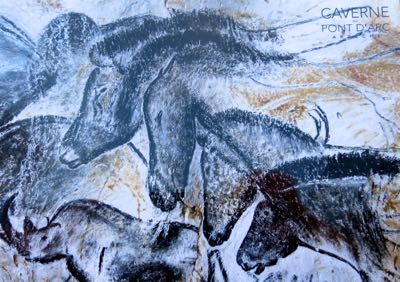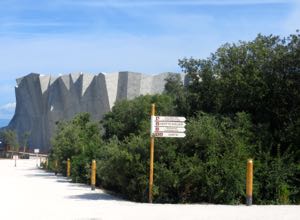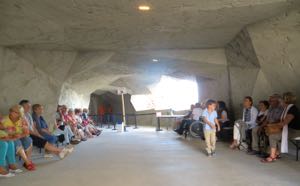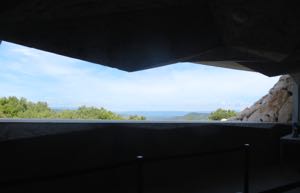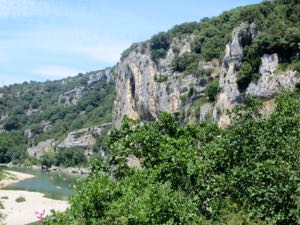 |
La Caverne du Pont d'Arc, France | |
| This great replica of the cave with hundreds of 36,000-year-old cave paintings is the largest in the world—the Louvre of prehistoric art! | ||
|
|
|
The Caverne du Pont d'Arc near Orange in Provence (map) is the largest prehistoric cave replica ever built, 10 times larger than the one at Lascaux, and the paintings are 15,000 to 20,000 years older than those at Lascaux. A visit to the Caverne du Pont d'Arc makes a great day trip from Orange and can be combined with a driving trip along the beautiful Gorges de l'Ardèche. DiscoveryIn 1994 three speleologists discovered a large cave in the Ardèche region. As they explored the cave, they were presented with hundreds of beautiful paintings and drawings, mostly of animals. They reported their findings to the French government, who soon took control of the site. It was named Chauvet Cave in honor of Jean-Marie Chauvet, the leader of the explorers. Having learned from the damage done to the prehistoric cave art at Lascaux due to changes in climate and large numbers of visitors, the government immediately closed the Chauvet Cave to protect the masterpieces. For 20 years researchers studied and dated the works, now believed to be the oldest human paintings in the world, dating back some 36,000 years. At the same time, work began to build a reproduction of the cave and its paintings, so that people of today could see and appreciate this amazing art. In April 2015 the replica, La Caverne du Pont d'Arc, opened to the public. How to VisitYou must choose a group departure time and reserve your place in advance. Groups of about 40 persons depart every few minutes throughout the day—all places reserved. Without a timed reservation, you may not be able to enter the caves. More... Most visits are in French, though one or two each day will be in English. Audioguides are available if you do not understand French and can only schedule a French tour. The extent of the original Chauvet Cave has been reduced in the replica, but all of the paintings are presented. On the TourNo photography is allowed in the caves, and no pet animals are allowed on the property. The group tour lasts about one hour. It moves at a steady pace. You must stay with your group. You will be aware of other groups in the cave as you follow the walkway. Sophisticated audio systems are designed so that each guide can communicate with his or her group over hidden speakers in each stopping-point. As you move through the Caverne, you will see over 400 paintings and drawings, some in charcoal, some in ocher, some drawn with flint or by finger in the clay. Some of the paintings are made from simple hand prints, but most present amazingly life-like and sensitive images of horses, lions, bears, rhinoceros, bison, mammoths, and other animals. Four horses drawn together illustrate depth, as well as the different personalities of the animals: one appears angry or defiant, one appears to be flaring its nostrils, etc.
The deeper you go into the cave, the more sophisticated the paintings, ending with the Lion Panel, with close to 100 animals of various types. Again, the faces of the lions and other animals portray depth, personality, and great individuality. Galerie de l'AurignacienBefore or after your group tour of the caverne you can explore the exhibits in the Galerie de l'Aurignacien, Aurignacien being the name used to designate people of this time period. The exhibits are very interactive, educational for both adults and children. History of the CavesHow did the original Chauvet Cave survive so well? Scientists have determined that the entrance to the cave was closed off due to a rock slide over 20,000 years ago. Thus no light or air reached the interior and the paintings were preserved. Since its discovery, visits have been limited to researchers and invited guests, to continue to protect these masterpieces. While we would all love to see the original paintings and be able to spend as much time as we want admiring them, that's simply not possible without destroying them. The Caverne du Pont d'Arc allows us a glimpse into the minds and hearts of these remarkable artists, our ancestors. Note: A documentary film titled Cave of Forgotten Dreams, (Werner Herzog, 2010) tells the story of the cave and shows the actual cave and the paintings and bones in situ. La Caverne du Pont d'Arc
|
|
Above, the dramatic building that houses the entrance to the Caverne du Pont d'Arc.
|

